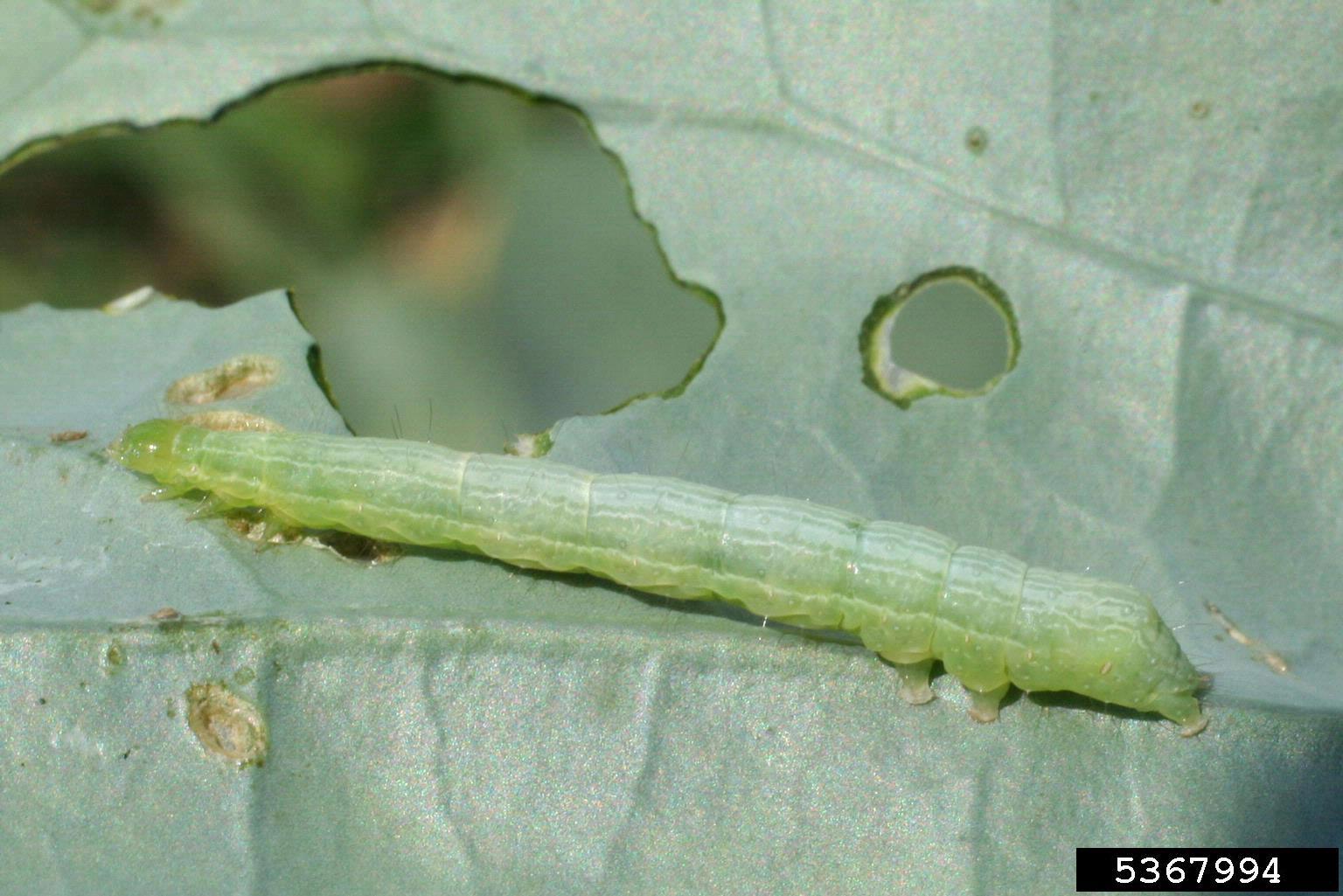
Photo: David Cappaert, Bugwood.org
Appearance
- Eggs: Tiny yellowish-white to greenish half-spheres, laid singly on leaves, often in small clusters of 6-7.
- Larvae: Caterpillars initially hatch off-white and become pale green with distinct white stripes down each side and 4 light stripes down the back. 5-7 instars, reaching 1½” at maturity.
- Typical “measuring” worm that arches its body up into a loop as it crawls.
- Pupae: About 3/4" long, initially green, turning dark brown/black, contained within a white, thin, fragile silky cocoon formed on underside of foliage, in plant debris, or in loose soil.
- Adults: Moderate size (up to 1½” wingspan) mottled gray-brown moth with silvery white mark near center of each forewing.

